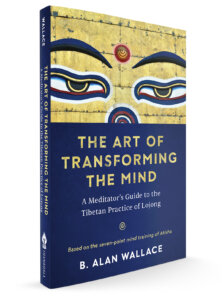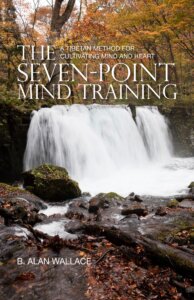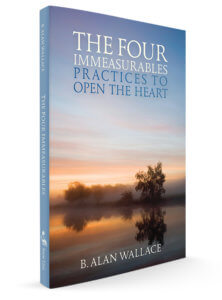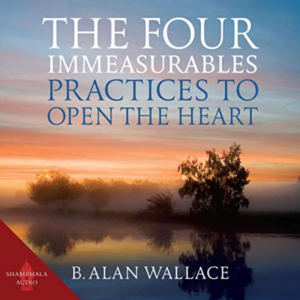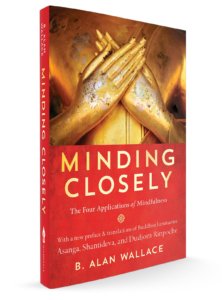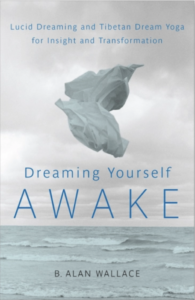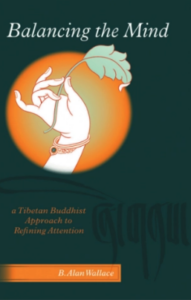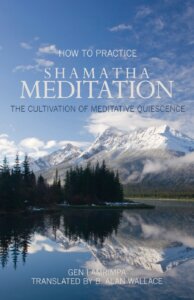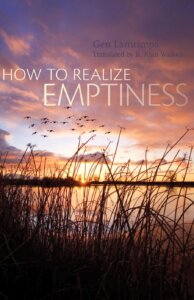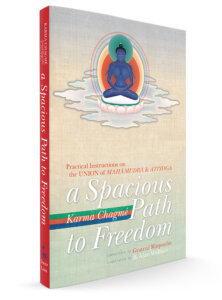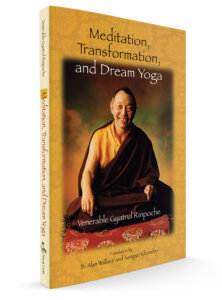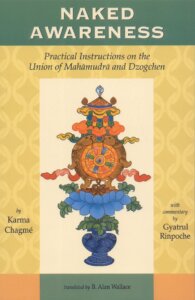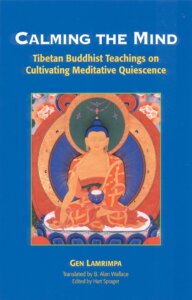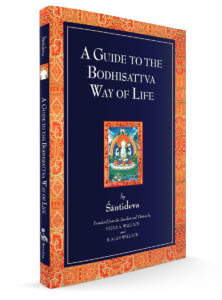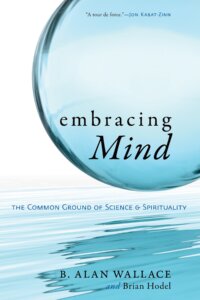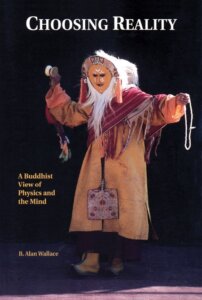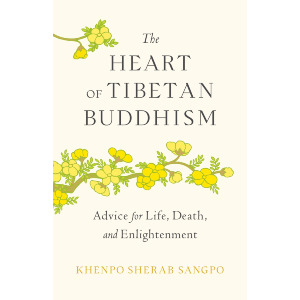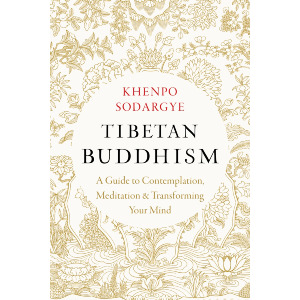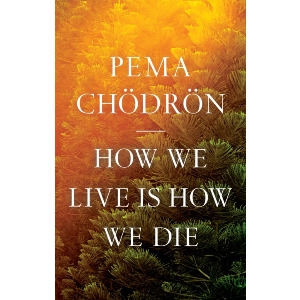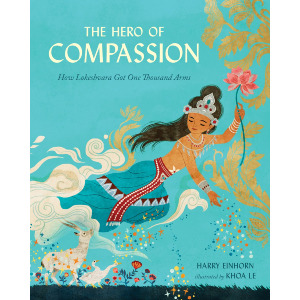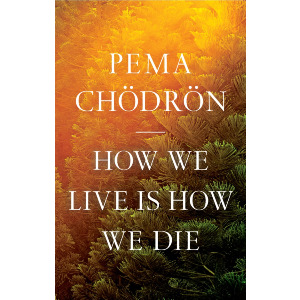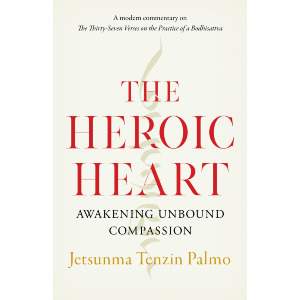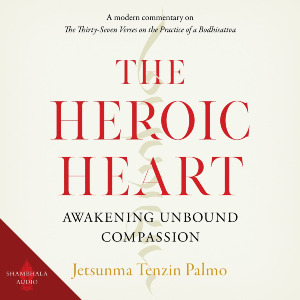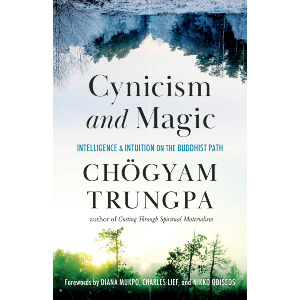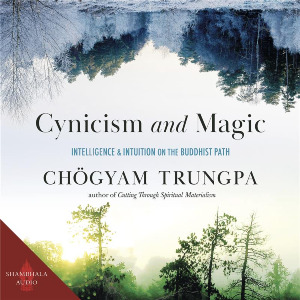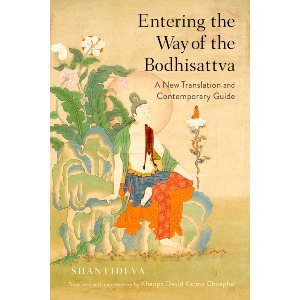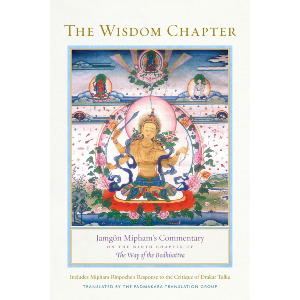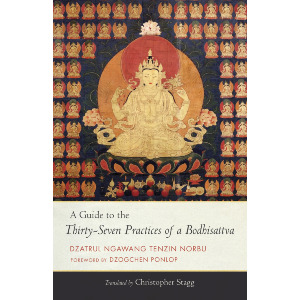
B. Alan Wallace has authored, translated, edited, and contributed to more than forty books on Tibetan Buddhism, science, and culture. With fourteen years as a Buddhist monk, he earned a BA in physics and the philosophy of science and then a PhD in religious studies. After teaching in the Department of Religious Studies at the University of California, Santa Barbara, he founded the Santa Barbara Institute for Consciousness Studies to explore the integration of scientific approaches and contemplative methods.
We have a wide selection of books written and translated by Alan Wallace. Discover more below!
B. Alan Wallace on Buddhist Meditation Practice
Lojong "Mind Training"
The Art of Transforming the Mind: A Meditator’s Guide to the Tibetan Practice of Lojong
The purpose of lojong, a traditional Mahayana Buddhist practice of training the mind, is about transforming one’s attitude and expanding one’s sense of self to encompass the greater whole. In this modern presentation of lojong practice and Atisha’s Seven-Point Mind Training, author, translator, and Buddhist practitioner B. Alan Wallace gives readers a framework from which they may cultivate the qualities of loving-kindness, compassion, and insight while diminishing harmful habits and ways of thinking. “All of us have attitudes,” Wallace explains, and “attitudes need adjusting.” The practice of lojong is therefore presented as a method to shift our attitude away from our problems, anxieties, hopes, and fears toward an expansive sense of joy and well-being that springs from the very essence of Mahayana—bodhichitta.
The Seven-Point Mind Training: A Tibetan Method for Cultivating Mind and Heart
By B. Alan Wallace
Edited by Zara Houshmand
In this society, with its hurly-burly pace demanding of our time, it is ever so easy to let life slip by. Looking back after ten, twenty, thirty, years—we wonder what we have really accomplished. The process of simply existing is not necessarily meaningful. And yet there is an unlimited potential for meaning and value in this human existence. The Seven-Point Mind Training is one eminently practical way of tapping into that meaning. At the heart of the Seven-Point Mind Training lies the transformation of the circumstances that life brings us, however hard as the raw material from which we create our own spiritual path. The central theme of the Seven-Point Mind Training is to make the liberating passage from the constricting solitude of self-centeredness to the warm kinship with others which occurs with the cultivation of cherishing others. This Mind Training is especially well-suited for an active life. It helps us to reexamine our relationships—to family, friends, enemies, and strangers—and gradually transform our responses to whatever life throws our way.
Four Immeasurables
The Four Immeasurables: Practices to Open the Heart
By B. Alan Wallace
Edited by Zara Houshmand
The Four Immeasurables—the cultivation of loving-kindness, compassion, empathetic joy, and equanimity—is a rich suite of practices that open the heart, counter the distortions in our relationships to ourselves, and deepen our relationships to others. Alan Wallace presents a unique interweaving of teachings on the Four Immeasurables with instruction on meditative quiescence, or shamatha practice, to empower the mind. This book includes both guided meditations and lively discussions on the implications of these teachings for our life.
Also available as an audiobook. See below.
Other Styles of Meditation
Minding Closely: The Four Applications of Mindfulness
Bringing in his experience as a Buddhist monk, scientist, and contemplative, Alan Wallace offers a rich synthesis of Eastern and Western mindfulness traditions, along with a comprehensive range of guided meditation practices interwoven throughout the text. The meditations are systematically presented, beginning with very basic instructions, which are then gradually built upon as one gains increasing familiarity with the practice.
Dreaming Yourself Awake: Lucid Dreaming and Tibetan Dream Yoga for Insight and Transformation
By B. Alan Wallace
Edited by Brian Hodel
Some of the greatest of life’s adventures can happen while you’re sound asleep. That’s the promise of lucid dreaming, which is the ability to alter your own dream reality any way you like simply by being aware of the fact that you’re dreaming while you’re in the midst of a dream. There is a range of techniques anyone can learn to become a lucid dreamer—and this book provides all the instruction you need to get started. But B. Alan Wallace also shows how to take the experience of lucid dreaming beyond entertainment to use it to heighten creativity, to solve problems, and to increase self-knowledge. He then goes a step further: moving on to the methods of Tibetan Buddhist dream yoga for using your lucid dreams to attain the profoundest kind of insight.
Translations by B. Alan Wallace
Balancing the Mind: A Tibetan Buddhist Approach to Refining Attention
For centuries, Tibetan Buddhist contemplatives have directly explored consciousness through carefully honed and rigorous techniques of meditation. B. Alan Wallace explains the methods and experiences of Tibetan practitioners and compares these with investigations of consciousness by Western scientists and philosophers. Balancing the Mind includes a translation of the classic discussion of methods for developing exceptionally high degrees of attentional stability and clarity by fifteenth-century Tibetan contemplative Tsongkhapa.
How to Practice Shamatha Meditation: The Cultivation of Meditative Quiescence
By Gen Lamrimpa
Edited by Hart Sprager
Translated by B. Alan Wallace
In 1988, Gen Lamrimpa, a Tibetan monk, led a one-year retreat in the Pacific Northwest, during which a group of Western meditators devoted themselves to the practice of meditative quiescence (shamatha). This book is a record of the oral teachings he gave to this group at the outset of the retreat. The teachings are brought to life by Gen Lamrimpa's warmth, humor, and extensive personal experience as a contemplative recluse. An invaluable practical guide for those seeking to develop greater attentional stability and clarity, this work will be of considerable interest to meditators, psychologists, and all others who are concerned with the potentials of the human mind.
By Gen Lamrimpa
Edited by Ellen Posman
Translated by B. Alan Wallace
Realizing emptiness or grasping the true nature of reality lies at the heart of the Buddhist path. In this book, Gen Lamrimpa offers practical instruction on Madhyamaka, insight meditation aimed at realizing emptiness. Drawing on his theoretical training as well as his extensive meditative experience, he explains how to use Madhyamaka reasoning to experience the way in which all things exist as dependently related events.
A Spacious Path to Freedom: Practical Instructions on the Union of Mahamudra and Atiyoga
By Karma Chagme
Commentaries by Gyatrul Rinpoche
Translated by B. Alan Wallace
This manual of Tibetan meditation simply and thoroughly presents the profound Dzogchen and Mahamudra systems of practice. Karma Chagmé sets forth the stages of meditation practice, including the cultivation of meditative quiescence and insight, the experiential identification of awareness, and the highest steps of Mahamudra and Atiyoga, leading to perfect enlightenment in one lifetime. Drawing from his enormous textual erudition and mastery of Tibetan oral traditions, he shows how these two meditative systems can be unified into a single integrated approach to realizing the ultimate nature of consciousness.
Meditation, Transformation, and Dream Yoga
By Gyatrul Rinpoche
Translated by B. Alan Wallace
Translated by Sangye Khandro
The three traditional Nyingma texts and Venerable Gyatrul Rinpoche's commentary included in this book were selected by him for their relevance to the modern-day spiritual aspirant who must combine and balance quality practice time, work time, and rest time in the course of a busy day. Guidelines for formal sitting are presented here from the Dzogchen perspective in the teachings on quiescence meditation. Practices for bringing the experiences of daily life into the spiritual path are presented in the section on transformation. Finally, the teachings on dream yoga guide the practitioner in the conscious control of the dream state as well as the bardo state at the end of life. Ven. Gyatrul Rinpoche's dynamic and practical commentaries on each section are specially tailored to the needs of Western students. The result is an indispensable handbook for practitioners at all levels of experience. When the Venerable Gyatrul Rinpoche arrived in the West many decades ago, he was already a receptacle for an abundance of transmissions received from many of the foremost and authentic masters of our times. Since then, his noble disposition and advanced level of meditation practice has assisted innumerable people, and he has established many Dharma centers.
Healing from the Source: The Science and Lore of Tibetan Medicine
By Yeshi Dhonden
Edited by B. Alan Wallace
Translated by B. Alan Wallace
In this remarkable contemporary presentation of the theory and practice of Tibetan medicine, Dr. Yeshi Dhonden, twenty years the personal physician of H.H. the Dalai Lama, draws from over fifty years of practicing and teaching this ancient tradition of healing. This volume vividly presents a series of lectures Dr. Dhonden gave before a group of health care professionals at California Pacific Medical Center in San Francisco. This lecture series was presented during the planning stages of a research project at the University of California San Francisco to test Dr. Dhonden's medical treatment for metastatic breast cancer. (This research project caught the interest of NBC's Dateline, which filmed an hour-long documentary of it that aired in January 2000.) Dr. Dhonden elucidates the holistic Tibetan medical view of health and disease, referring to traditional Tibetan medical sources as well as his own experiences as a doctor practicing in Tibet India and numerous countries throughout Europe and America. His presentation is delightfully complemented by many anecdotes drawing from the ancient lore of popular folk medicine in Tibet. For health care professionals, anthropologists, historians of medicine, medical ethicists, and the general public interested in Tibetan medicine, this book is a fascinating contribution by one of the foremost practitioners of Tibetan medicine in the modern world.
Naked Awareness: Practical Instructions on the Union of Mahamudra and Dzogchen
By Karma Chagme
Commentaries by Gyatrul Rinpoche
Translated by B. Alan Wallace
Edited by B. Alan Wallace
Edited by Lindy Steele
In this classic seventeenth-century presentation of the union of Mahamudra and Dzogchen, Karma Chagmé, one of the great teachers of both these lineages of Tibetan Buddhism, begins with an overview of the spirit of awakening and the nature of actions and their ethical consequences. Next, drawing from his enormous erudition and profound experience, Chagmé gives exceptionally lucid instructions on the two phases of Dzogchen practice—the "breakthrough" and the "leap-over"—followed by an accessible introduction to the practice of the transference of consciousness at the time of death. The concluding chapters of this treatise present a detailed analysis of Mahamudra meditation in relation to Dzogchen practice. This tour de force of scholarly erudition and contemplative insight is made all the more accessible by the lively commentary of the contemporary Nyingma Lama Gyatrul Rinpoche.
Calming the Mind: Tibetan Buddhist Teachings on Cultivating Meditative Quiescence
By Gen Lamrimpa
Edited by Hart Sprager
Translated by B. Alan Wallace
To stabilize the mind in one-pointed concentration is the basis of all forms of meditation. Gen Lamrimpa was a meditation master who lived in a meditation hut in Dharamsala and who had been called to teach by the Dalai Lama. He leads the meditator step-by-step through the stages of meditation and past the many obstacles that arise along the way. He discusses the qualities of mind that represent each of nine levels of attainment and the six mental powers.
A Guide to the Bodhisattva Way of Life
By Shantideva
Translated by Vesna A. Wallace
Translated by B. Alan Wallace
In the whole of the Tibetan Buddhist tradition, there is no single treatise more deeply revered or widely practiced than A Guide to the Bodhisattva Way of Life. Composed in the eighth century by the Indian Bodhisattva Santideva, it became an instant classic in the curricula of the Buddhist monastic universities of India, and its renown has grown ever since. Santideva presents methods to harmonize one's life with the Bodhisattva ideal and inspires the reader to cultivate the perfections of the Bodhisattva: generosity, ethics, patience, zeal, meditative concentration, and wisdom.
Buddhism and Science
Embracing Mind: The Common Ground of Science and Spirituality
By Brian Hodel
By B. Alan Wallace
What is Mind? For this ancient question we are still seeking answers. B. Alan Wallace and Brian Hodel propose a science of the mind based on the contemplative wisdom of Buddhism, Hinduism, Taoism, Christianity, and Islam.
The authors begin by exploring the history of science, showing how science tends to ignore the mind, even while it is understood to be the very instrument through which we comprehend the world of nature. They then propose a contemplative science of mind based on the sophisticated techniques of meditation that have been practiced for thousands of years in the great spiritual traditions. The final section presents meditations that are of universal relevance—to scientists and people of all faiths—for revealing new dimensions of consciousness and human flourishing.
Embracing Mind moves us beyond the dogmatic debates between theists and atheists over Intelligent Design and Neo-Darwinism, and it returns us to the vital core of science and spirituality: deepening our experience of reality as a whole.
Choosing Reality: A Buddhist View of Physics and the Mind
Choosing Reality shows how Buddhist contemplative methods of investigating reality are relevant for modern physics and psychology. How shall we understand the relationship between the way we experience reality and the way science describes it? In examining this question, Alan Wallace discusses two opposing views: the realist view, which argues that scientific theories represent objective reality, and the instrumentalist view, which states that concepts cannot describe what exists independently of them. Finding both of these philosophies of science inadequate, the author explores the Buddhist middle way view and the relevance for modern physics of Buddhist contemplative methods of investigating reality. He also examines the ideas of body, mind, and reincarnation from the viewpoint of Tibetan Buddhism.


